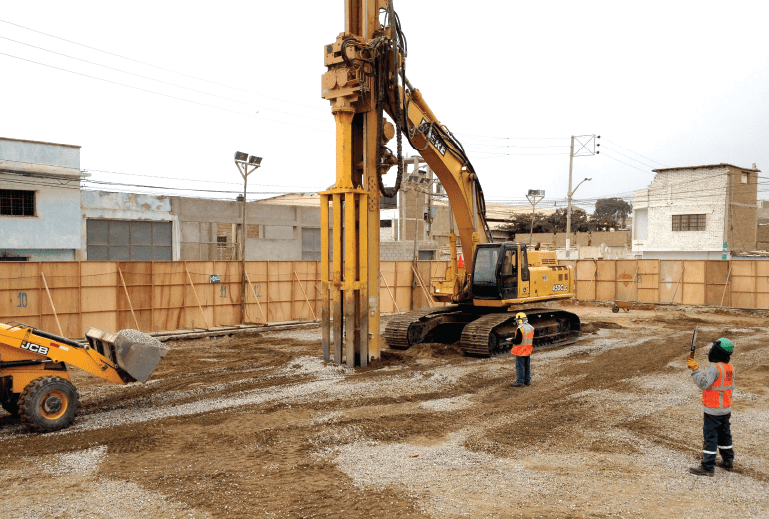
The Densipact® system may be just what your project needs
Sandy soil can be found throughout all regions of Canada and oftentimes in areas of planned development for large, load-bearing structures.
This poses distinct foundation challenges to engineers, contractors and developers. Construction of pretty much any substantial structure on sandy soil has the potential for disaster based on the naturally shifting characteristics of sand.
Loose sand can be subject to large settlements and these settlements tend to occur quickly due to the free-draining granular nature of sand. To further complicate matters, clean sands (sands with fewer fine particles mixed in) underwater can be prone to liquefaction (water build-up) when subjected to excitation such as vibrations or seismic forces. Seismic forces cause a liquefaction increase in pore pressure to a point where the sand becomes suspended and the natural angularity of the sand no longer affords high shear strength. The temporarily suspended sand-in-water mixture behaves like a liquid and any objects sink to a point where the weight of the object is equal to the weight of the sand-water liquid. Once the excitation stops and pore pressure dissipates, the sand becomes frictional again and the settlement stops, but by then significant damage to the structure above has already occurred.
Loose sandy soil, regardless of its specific characteristics, requires significant densification to provide sufficient settlement control and sound bearing pressure for new structures being built.
Strange looking, but effective
An innovative system to effectively combat the challenge of sandy soils is the Geopier Densipact® system, designed through research by the Geopier Foundation Company based out of North Carolina that has been at the forefront of the development of groundbreaking ground improvement systems for many decades. Their Densipact® system was designed specifically for sandy soils for both settlement control and liquefaction mitigation and to densify loose sandy soils to depths of 25 to 30 feet.
This high-performing system provides unsurpassed strength and stiffness, eliminates casing and allows for construction in soils that are prone to cave-ins, high water levels and liquefaction. Additionally, the Densipact® system provides very high bearing pressures to ensure consistently high levels of performance and reliability. The Densipact® system creates Rammed Compaction® points by repeatedly driving a multi-tined tool into the ground using high frequency, vertical impact energy and downward crowd force to improve granular soils. The result is a significant increase in soil density of loose sand and gravel to reduce settlement and support foundations. The improved density and stiffness is also used to mitigate soil liquefaction and reduce seismic settlement.
Simple process, many advantages
The Densipact® system is a three-step process:
- A specially designed multi-tined tool uses high frequency, vertical impact energy and downward crowd force to drive the tines to the design depth.
- The tines are removed, and the resulting cavities and depression are filled with on-site sand or other suitable aggregates (i.e. gravel, recycled materials).
- The tooling is then re-driven in the same location to further improve the loose sand and backfill materials. The process is repeated (typically two to three times per location depending on soil conditions) until the required penetration resistance is achieved. Verification of improvement is provided through load testing or in-situ penetration testing (CPTs, SPTs).
Not only is the process simple, there are many advantages to using the Densipact® system:
- Environmentally safe and sustainable construction.
- Economical when compared to traditional foundation alternatives.
- Rapid installation process improves project schedules.
- Efficiently eliminates dewatering for over-excavation operations in high groundwater environments.
- Clean, dry displacement installation process results in no spoils or siltation concerns.
- Eliminates casing and allows for construction in caving soils including high groundwater sand, including treatment for liquefaction.
- Proven with bearing pressures up to 14,000 psf.
Mark Tigchelaar, P.Eng., is the president and founder of GeoSolv Design/Build. He is passionate about both the geoscience and the construction industry as a whole, and has a strong desire to contribute to its excellence by promoting the concept of improved value throughout the industry. He can be reached at mark@geosolv.ca.
